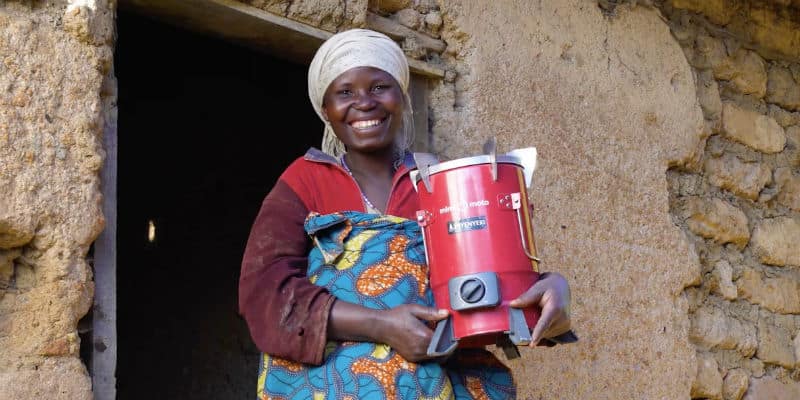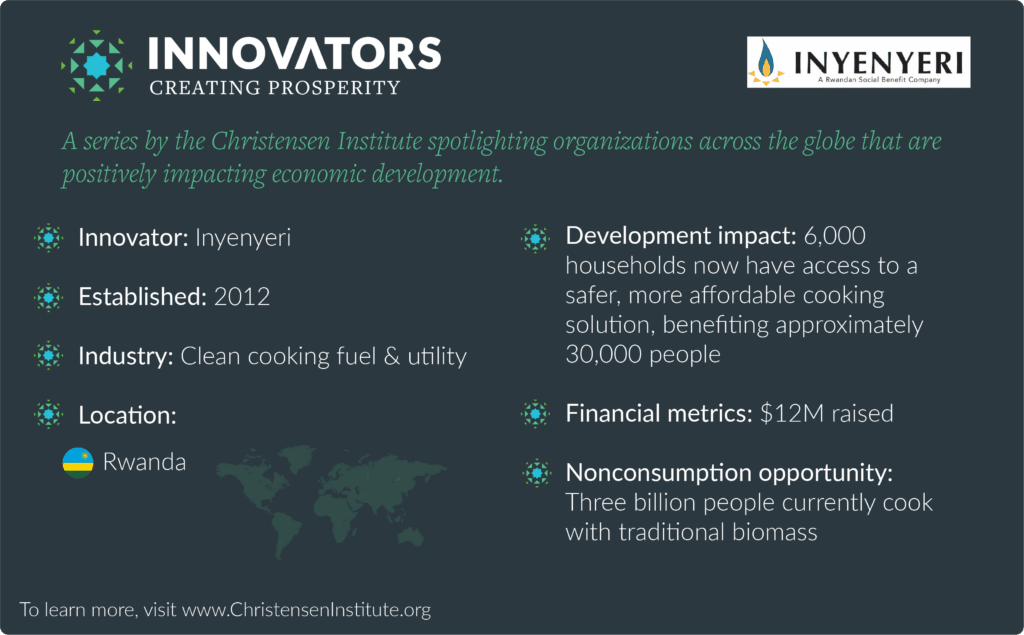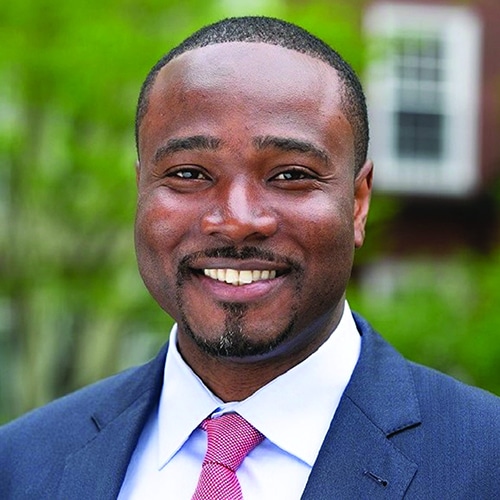Welcome to our Innovators Creating Prosperity series, spotlighting organizations across the globe that are positively impacting economic development.

Globally, almost three billion people depend on traditional biomass for cooking, a number that is expected to remain unchanged by 2030. This method of cooking is not only expensive and inefficient, but it is also one of the biggest challenges to human health in low- and middle-income countries, killing approximately four million people annually. For the hundreds of millions who survive, they are burdened with serious diseases including pneumonia, ischaemic heart disease, lung cancer, and many others.
Where diseases such as malaria and diarrhea are obvious killers, this method of cooking is silent but just as deadly.
Then there is the day-to-day struggle of traditional cooking, something that is disproportionately experienced by women and girls. To collect enough biomass, women and girls must often walk miles away from home, putting them at risk and preventing them from participating in school and other activities. Cooking with charcoal also produces smoke, dirtying up the home and requiring additional time spent cleaning.
It was in this struggle that Eric Reynolds developed the idea behind Inyenyeri. Inyenyeri allows customers to lease its clean cookstove for free and either purchase affordable fuel pellets for cash, or trade in raw biomass for pellets. For customers who choose the latter, they must only collect half as much wood as they did before, saving them time, and exposing them to less risk.
If Inyenyeri manages to scale and reach communities beyond Rwanda, it stands to not only make life markedly better for potentially hundreds of millions of people, but also generate wealth and create jobs. In this interview, we chat with Inyenyeri founder Eric Reynolds to uncover how he identified opportunity and how other entrepreneurs might think about developing businesses that can truly change the world.
1. Where did you get your idea? How did you know there was opportunity?
While working on a genocide survivors assistance project, I witnessed traditional cooking for the first time and thought there’s got to be a better way. I later learned that 81% of households in Sub Saharan Africa cook with wood-based biomass and spend approximately $40 billion a year on it. That meant any alternative that was cleaner and cheaper would have a huge total addressable market.
2. What was your initial target market?
Urban households in Gisenyi, Rwanda, and nearby rural households in KIbere. We needed to know it would work for rural and urban women the same.
Theory insight: Rather than come up with a one-size-fits-none solution, Inyenyeri understood the value of meeting customers where they are. To ensure they were doing that, they needed to start small, allowing them the chance to iterate over time.
3. What did your target market do/use before your innovation was available?
Many of our current customers cooked with charcoal, or sticks if they couldn’t afford that. There are three billion people that cook that way; only the wealthy can afford electricity and liquefied petroleum gas.
Theory insight: Whenever there’s a product or service only available to the wealthy in society, this often means there is vast nonconsumption happening. If entrepreneurs are able to develop an innovative business model that targets this set of nonconsumers—people who’ve literally been unable to consume something due to cost, access, or complexity—they will not only reap handsome returns, but will also help develop a community.
4. Where did you raise funding, and what advice would you give others regarding fundraising?
Small foundations, then larger ones, then small investments, and working our way up to larger ones. If we had to do it again, we might start out as a nonprofit, which has an easier time securing funding for innovative, unproven ideas in the international development space.
Theory insight: Entrepreneurs might be lucky to attract funding from large organizations at the onset, but funding at the market-creation stage often comes from smaller foundations or funds. This isn’t dissimilar to the investing world where angel investors and venture capitalists often fund entrepreneurs with bright ideas before bigger banks and institutional funds step in.
5. Innovators often feel that the lack of an enabling environment in emerging markets—poor infrastructure, inadequate institutions, and little government support—is insurmountable. How did you overcome this challenge?
We’ve been lucky to address a problem governments also want solved. Clean cooking is a priority for almost every government in Africa, and especially in a country like Rwanda that’s very crowded and running out of resources including biomass. The government is very supportive of any ideas that might help, and typically stays out of the way of entrepreneurs in this area.
6. What can other innovators take away from your experience? Is there anything you’d do differently?
I wasn’t an expert in the field, and I think that helped—because I came to it with fresh eyes, it helped me come at it with new ideas that hadn’t been tried before. Big “unsolvable” problems are just opportunities that haven’t been cracked open yet—keep iterating, keep inventing, you’ll figure it out.




